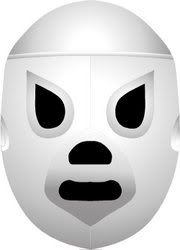Hay un periodista en este mundo...
Hay un periodista en este mundo al que estimo mucho, un hombre que vive desde hace mucho en Territorio Comanche, pisando lo vidrios que dejan las bombas y misiles de tantas guerras. Su nombre es Robert Fisk y trabaja para The Independent. Ahora se encuentra en Beirut. Revisando la columna del diario me encontré con este artículo de Fisk del 9 de agosto (hoy en Colombia). Aquí les dejo la entrada original: Independent Online. Cómo hacen de falta estos relatos en Colombia, pero se me olvidaba que según decreto real en Colombia no hay conflicto, aquí todo está bien, entonces, como no hay conflicto, dejo un testimonio muy humano de un conflicto en donde son tan detestables los misiles de un lado como los bombardeos del otro.
P.D: Me pregunto ¿En dónde están y quién se robo los computadores de Codhes con las cifras de violaciones de derechos humanos y desplazamiento de este país? ¿Quién masacró a los AWA? ¿Por qué alguien que golpea a la mujer pero es respetado empresario de la ganadería y la palma africana (raros ambos negocios juntos) es cuidado en las instalaciones del DAS como lo dijo hoy Caracol, que creo no es prisión ni centro de retención en casos de violencia intrafamiliar ni tentativa de homicidio?
Robert Fisk: What do you say to a man whose family is buried under the rubble?
P.D: Me pregunto ¿En dónde están y quién se robo los computadores de Codhes con las cifras de violaciones de derechos humanos y desplazamiento de este país? ¿Quién masacró a los AWA? ¿Por qué alguien que golpea a la mujer pero es respetado empresario de la ganadería y la palma africana (raros ambos negocios juntos) es cuidado en las instalaciones del DAS como lo dijo hoy Caracol, que creo no es prisión ni centro de retención en casos de violencia intrafamiliar ni tentativa de homicidio?
Robert Fisk: What do you say to a man whose family is buried under the rubble?
Published: 09 August 2006
There were bulldozers turning over the tons of rubble, a cloud of dust and smoke a mile high over the smashed slums of Beirut's southern suburbs and a tall man in a grey T-shirt - a Brooklyn taxi driver, no less - standing on the verge of tears, staring at what may well be the grave of his grandfather, his uncle and aunt. Half the family home had been torn away and the entire block of civilian apartments next door had been smashed to the ground a few hours earlier by the two missiles that exploded in Asaad al-Assad Street.
What do you say to a man whose family is buried under the rubble? The last corpse had been a man whose face appeared etched in dust before the muck was removed and he turned out to be paper-thin - so perfectly had the falling concrete crushed him. Mohamed al-Husseini had left New York for a holiday with his young wife and infant child - they were safe in the centre of Beirut - because he wanted to see his family home and talk to the relatives he grew up with.
"Just look what the Israelis have done," he said, not taking his eyes off the floors of the apartments, now scarcely an inch between them. "I am confused. You know? I don't know what to do. I could go back to my wife and kid but the rest of my family is in there. They used to live in the south and they survived there. Then they come to Beirut and die here."
Mohamed al-Husseini's grandfather, Mohamed Yassin, is - let us not say "was" yet - 75. His uncle is Hussein Yassin, his aunt is called Hila. By last night, nothing had been found of them. And of those in the building next door?
At least 17 civilians were killed, many of them children. A 12-year-old boy called Hussein Ahmed Mohsen lay dead in the mortuary of the Mount Lebanon Hospital, along with a woman who died just after being rescued when the missiles collapsed her home just after 7.30 on Monday night. Almost all the occupants of this doomed building were members of the Rmeiti family - again, they were from the dangerous south - and 15 of the dead were from the same village.
It was a scene to provoke fury. One Hizbollah "watcher" demanded my press card and lost interest when he read it. But a Lebanese youth in a yellow shirt at the scene was grabbed by the same man, hauled away by his collar and handed over to a clutch of beefy, tall individuals who forced him into a car. Everyone now searches for spies, for the men - and women - who are reputed to "paint" the apartment blocks of Beirut for Israel's missile technology to lock on to their targets.
A sad, grim meeting in the same Mount Lebanon Hospital suggested that the house had not been "fingered" by anyone. I found Ali Rmeiti, an employee at Beirut airport, covered in bloody wounds, his face distorted, shaking his head in disbelief. "I was on the balcony with my wife, Huda, and three of our children ... I heard nothing - nothing. I didn't realise what happened. It was black. Then came the second blast and we were all blown into the street with the balcony."
Huda Rmeiti is lying next to her husband on a drip-feed, covered with even more bloody wounds than Ali. I know - and they do not - that three of their four children were killed.
And why was the building struck? The Israelis have slaughtered hundreds of civilians, attacking convoys of refugees they themselves ordered to leave. But Saadieh, Ali Rmeiti's sister-in-law, has a story which matches those of two other survivors. Before the missiles exploded, she said, an Israeli drone flew over the Shiyyah district, a pilotless reconnaissance aircraft which sends live pictures back to Tel Aviv. "Um Kamel", as the Lebanese call them, whined around for a time and then, without warning, someone drove down Assaad al-Assad street on a motorcycle and fired into the sky with a rifle opposite the Rmeiti home.
Then he left, some youth who wanted to prove his foolish manhood. You can't destroy drones with a rifle, as any Hizbollah member knows. But not long afterwards, the two missiles came streaking down on the homes of the innocent.
Perhaps there are two moral lessons from this, one obvious, the other familiar. Don't shoot at drones. And don't believe for a moment the Israelis will care about firing missiles into your home when their little toy spots a man with a gun.
What do you say to a man whose family is buried under the rubble? The last corpse had been a man whose face appeared etched in dust before the muck was removed and he turned out to be paper-thin - so perfectly had the falling concrete crushed him. Mohamed al-Husseini had left New York for a holiday with his young wife and infant child - they were safe in the centre of Beirut - because he wanted to see his family home and talk to the relatives he grew up with.
"Just look what the Israelis have done," he said, not taking his eyes off the floors of the apartments, now scarcely an inch between them. "I am confused. You know? I don't know what to do. I could go back to my wife and kid but the rest of my family is in there. They used to live in the south and they survived there. Then they come to Beirut and die here."
Mohamed al-Husseini's grandfather, Mohamed Yassin, is - let us not say "was" yet - 75. His uncle is Hussein Yassin, his aunt is called Hila. By last night, nothing had been found of them. And of those in the building next door?
At least 17 civilians were killed, many of them children. A 12-year-old boy called Hussein Ahmed Mohsen lay dead in the mortuary of the Mount Lebanon Hospital, along with a woman who died just after being rescued when the missiles collapsed her home just after 7.30 on Monday night. Almost all the occupants of this doomed building were members of the Rmeiti family - again, they were from the dangerous south - and 15 of the dead were from the same village.
It was a scene to provoke fury. One Hizbollah "watcher" demanded my press card and lost interest when he read it. But a Lebanese youth in a yellow shirt at the scene was grabbed by the same man, hauled away by his collar and handed over to a clutch of beefy, tall individuals who forced him into a car. Everyone now searches for spies, for the men - and women - who are reputed to "paint" the apartment blocks of Beirut for Israel's missile technology to lock on to their targets.
A sad, grim meeting in the same Mount Lebanon Hospital suggested that the house had not been "fingered" by anyone. I found Ali Rmeiti, an employee at Beirut airport, covered in bloody wounds, his face distorted, shaking his head in disbelief. "I was on the balcony with my wife, Huda, and three of our children ... I heard nothing - nothing. I didn't realise what happened. It was black. Then came the second blast and we were all blown into the street with the balcony."
Huda Rmeiti is lying next to her husband on a drip-feed, covered with even more bloody wounds than Ali. I know - and they do not - that three of their four children were killed.
And why was the building struck? The Israelis have slaughtered hundreds of civilians, attacking convoys of refugees they themselves ordered to leave. But Saadieh, Ali Rmeiti's sister-in-law, has a story which matches those of two other survivors. Before the missiles exploded, she said, an Israeli drone flew over the Shiyyah district, a pilotless reconnaissance aircraft which sends live pictures back to Tel Aviv. "Um Kamel", as the Lebanese call them, whined around for a time and then, without warning, someone drove down Assaad al-Assad street on a motorcycle and fired into the sky with a rifle opposite the Rmeiti home.
Then he left, some youth who wanted to prove his foolish manhood. You can't destroy drones with a rifle, as any Hizbollah member knows. But not long afterwards, the two missiles came streaking down on the homes of the innocent.
Perhaps there are two moral lessons from this, one obvious, the other familiar. Don't shoot at drones. And don't believe for a moment the Israelis will care about firing missiles into your home when their little toy spots a man with a gun.

























2 comentarios:
Excelente artículo y muy apropiado tu comentario, Mazo.
Saluditos
Gracias Falena, lástima que el artículo esté´"in English", pero ya no hay mucho tiempo pa' hacer más
Publicar un comentario